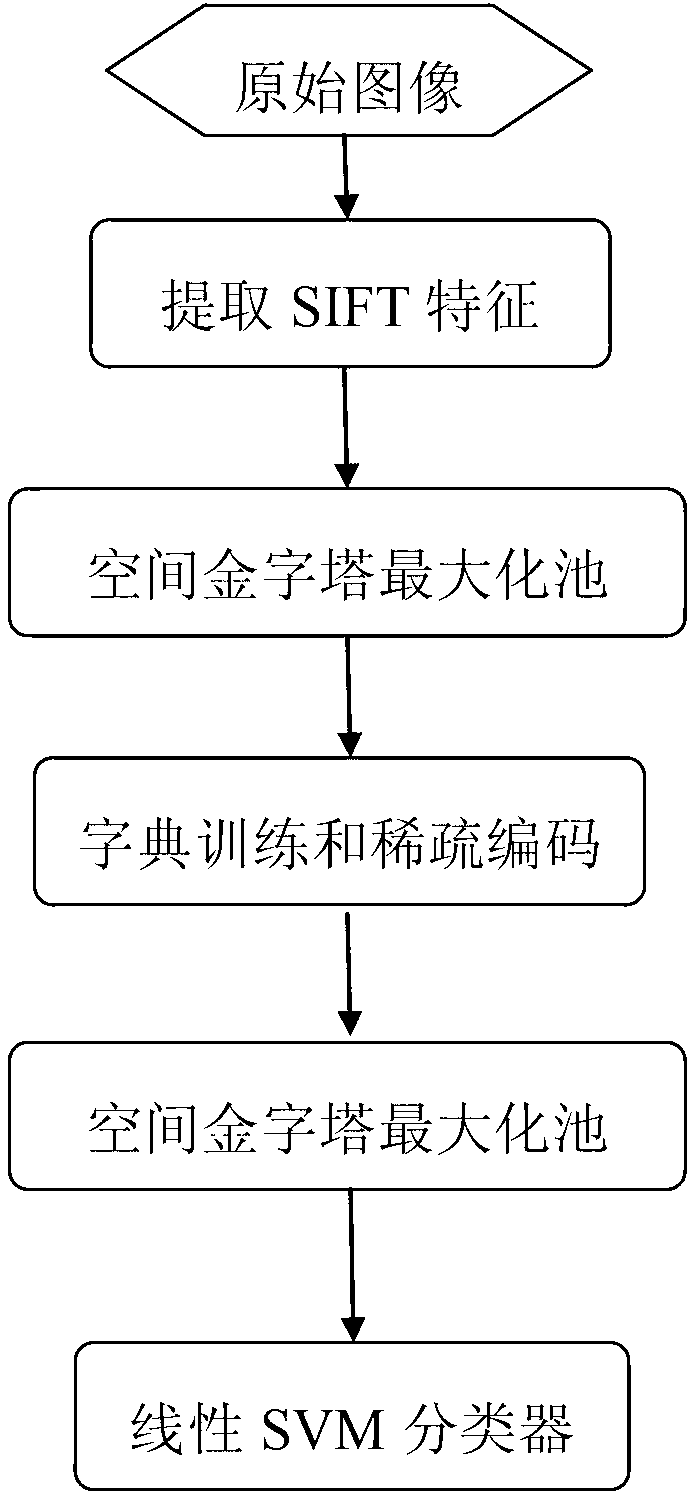Image classification method based on hierarchical SIFT (scale-invariant feature transform) features and sparse coding
A technology of sparse coding and classification methods, applied in the field of image classification, can solve the problems of redundant underlying features, failure to remove redundant information, loss of structural information of local image blocks, etc., and achieve the effect of reducing the dimensionality of SIFT features
- Summary
- Abstract
- Description
- Claims
- Application Information
AI Technical Summary
Problems solved by technology
Method used
Image
Examples
Embodiment Construction
[0022] refer to figure 1 , the implementation steps of the present invention are as follows:
[0023] Step 1, extract the scale-invariant SIFT feature vector of the image:
[0024] (1a) Perform Gaussian filtering on an image block with a size of 32×32 pixels, where the mean value of the Gaussian filter block is 0, the variance is 1, and the size is 5×5;
[0025] (1b) Calculate the gradient of each pixel for the image block after Gaussian filtering, including modulus and direction;
[0026] (1c) Count the sum of the projection sizes of each pixel in 8 directions in each 4×4 pixel image block, and generate an 8-dimensional feature vector, in which only positive values are counted, and the 8 directions are 0 degrees, 45 degrees, 90 degrees, 135 degrees, 180 degrees, 225 degrees, 270 degrees, 315 degrees, for the 8-dimensional feature vectors of 64 image blocks of 4×4 pixels in a 32×32 pixel image block, extracted to The scale-invariant SIFT feature vector of is 512-dimension...
PUM
 Login to View More
Login to View More Abstract
Description
Claims
Application Information
 Login to View More
Login to View More - R&D
- Intellectual Property
- Life Sciences
- Materials
- Tech Scout
- Unparalleled Data Quality
- Higher Quality Content
- 60% Fewer Hallucinations
Browse by: Latest US Patents, China's latest patents, Technical Efficacy Thesaurus, Application Domain, Technology Topic, Popular Technical Reports.
© 2025 PatSnap. All rights reserved.Legal|Privacy policy|Modern Slavery Act Transparency Statement|Sitemap|About US| Contact US: help@patsnap.com



